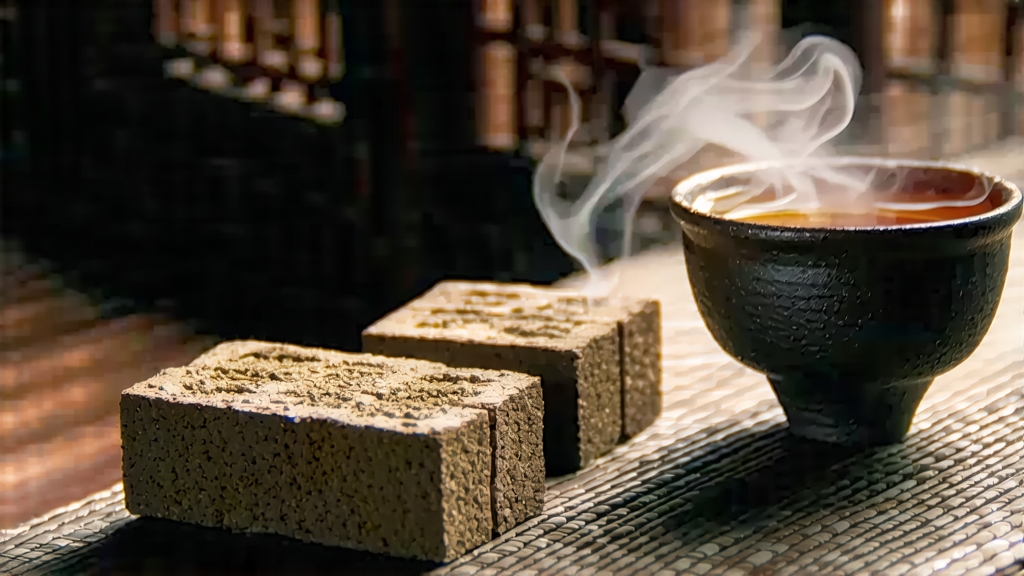
Tucked into the misty mountains of southern China’s Guangxi Zhuang Autonomous Region, Liubao cha is the quiet genius of the dark-tea family. While Pu-erh has become a global celebrity, Liubao has spent four centuries maturing in bamboo baskets, developing a flavor that Chinese tea hunters describe as “old forest in a cup.” To understand Liubao is to taste the subtropical terroir of the Dayao Mountains, to feel the humidity that seeps into every leaf, and to witness a craft that turns tea into time.
History: From Border Caravan to Imperial Tribute
The name “Liubao” literally means “six fortresses,” a reference to the six stockaded villages that once guarded the trade route between Guangxi and Guangdong. During the Ming dynasty (1368-1644), porters carried tightly pressed baskets of dark tea along the Tea-Horse Road westward to Tibet and north to Mongolia. The 20-day trek through steamy river valleys and chilly passes created a natural “wet pile” effect; the tea arrived softer, darker, and mysteriously sweeter. By the Qing Qianlong era (1736-1795), the imperial court in Beijing had listed Liubao as one the 24 tribute teas, demanding 150 baskets annually. Caravans were replaced by river rafts in the 19th century, and Liubao floated down the Liu River to the Pearl Delta, where clipper ships loaded it for Southeast Asia. In Malaysia’s tin mines, coolies drank it to prevent malaria and called it “kacha,” a Malay corruption of “Guangxi cha.” Today, aged Liubao from the 1950s still surfaces in Kuala Lumpur’s old Chinese medicinal halls, wrapped in the same bamboo skin its ancestors wore.
Micro-terroir: One County, Three Aromas
Modern Liubao is protected under China’s geographical-indication system, limiting authentic production to the county of Cangwu, Guangxi. Within Cangwu, three micro-zones produce noticeably different styles. The highest, Tiantang Peak (1,200 m), gives a camphor-cool fragrance thanks to towering Cinnamomum trees that shade the tea gardens. Middle-elevation Liumei village yields a honeyed jujine note because of iron-rich laterite soil. Closest to the river, Dacun basin produces the most maritime style: betel nut, dried longan, and a whisper of salt air. Farmers insist that a 3 °C difference in nightly temperature or a 50-hour shift in monsoon onset can bend the final cup toward either orchid or moss.
Leaf Material: The Yuntai Daye Secret
Unlike Pu-erh’s broad-leaf assamica, Liubao is made from a Guangxi-specific cultivar called Yuntai Daye—literally “cloud platform big leaf.” The variety’s cell walls are 12 % thicker than those of Yunnan’s Da Ye, allowing the leaves to withstand the double fermentation that follows. Spring picking follows the “yi ya san ye” rule: one bud plus three leaves no longer than 5 cm, ensuring enough stem sugar for post-fermentation sweetness. After plucking, the leaves are carried in bamboo sieves lined with banana leaf to prevent bruising during the 2-kilometer walk down to the village workshop.
Craft: The Double Dance of Water and Fire
Liubao’s processing is best visualized as two overlapping spirals: kill-green fixes the leaf, while wet-pile invites microbial rebirth.
- Solar withering: Leaves are spread on bamboo racks for 40 minutes of gentle mountain sun, reducing moisture to 68 %.
- Kill-green: A 220 °C wok roast lasting 4 minutes deactivates enzymes, but the operator tosses the leaves 30 % higher than in green-tea practice, preserving latent bacteria.
- Rolling: A 35-minute machine roll ruptures 60 % of cell walls; the twist is looser than Pu-erh’s to leave air channels for later fermentation.
- First drying: 80 °C hot-air ovens bring leaves to 14 % moisture, producing “mao cha” that smells like baked sweet potato.
- Wet piling: The signature step. Mao cha is piled 70 cm high inside a pine-lined room maintained at 28 °C and 85 % humidity. Every 48 hours the pile is turned; water mist is sprayed to keep the surface tacky. For seven days therm